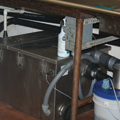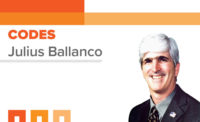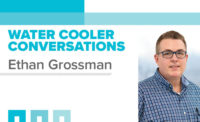A preview of the ICC 2012 code changes.

Every change to the 2015 International Plumbing, Mechanical and Fuel Gas codes has been submitted. That is hard to believe since it is only 2012. By the end of October, we will know what the 2015 codes will look like, yet they won’t be published until 2014. It raises the question of whether the code is out of date before it is published.
The single-cycle concept adopted by ICC (also used by IAPMO) hasn’t resulted in any fewer code changes. The number of code changes to these three codes is about the same as the last cycle. There are more than 200 changes each to the plumbing code and mechanical code, and the normal 50 or so to the fuel gas code.
These changes will first be reviewed at the code-change hearing in Dallas during the ICC meeting, which runs from April 28 through May 6. Changes to the International Building Code also will be heard during the same meeting. Because of the number of changes to the building code, ICC has indicated that the hearing may be extended until May 7 or 8.
This is the first cycle where there is a Code Action Committee for plumbing, mechanical and fuel gas. The CAC is designed to be a sounding board for hot issues in the three codes. Rather than a formal hearing process, the CAC meets and discusses the issues in depth. Any interested party can participate in the meeting. The discussions result in code changes submitted by the CAC. These changes must still be vetted by the Code Change Committee at the hearing.
Many of the CAC issues are clarifications to the code. When the code is misinterpreted, the CAC attempts to straighten out the language. It also discusses hot issues in the industry that may require changes to the code.
Changing the fixture table
Some of the bigger issues in the plumbing code involve the fixture table. This table is perhaps the most misinterpreted table in the code. Inspectors often apply the “Use Group” designation for determining the number of fixtures. That has never been the purpose of the table. The table lists the “Use Group” merely as a guideline. Each building is supposed to be analyzed for type of use, with the fixture count based on that analysis. There are a number of changes to this table to clarify use.
Another fixture issue, which has been discussed for many cycles, is the requirement for public facilities in a small mercantile facility. Public fixtures are required for virtually every mercantile building. However, some buildings only serve as pickup, takeout and drop-off facilities. A good example is a dry cleaner where one is in the building for less than five minutes, sometimes less than a minute. A take-out food place, such as a pizza place or Chinese restaurant, would fall into this category. The proposed change would not require public facilities for these types of buildings if the public space is less than 300 sq. ft. Only employee facilities would be required.
The hot topic of dezincification is the subject of a few code changes. A test for dezincification was added to NSF 14. One code change questions the appropriateness of this change since NSF 14 is a quality-control standard, not a material requirement standard. The change would delete reference to NSF 14. Another change proposes to require compliance with NSF 14 in the mechanical code. Traditionally, NSF 14 only has been in the plumbing code. The proposed mechanical code requirement is intended to apply to PEX fittings in hydronic systems.
There also are changes to the lead requirements for potable water piping material. One change would require all potable water piping material to meet the new federal no (low)-lead requirement that becomes effective in January 2014. The other change would only apply to materials used to supply water for drinking and cooking, which is consistent with federal law. The difference would be fixtures such as shower valves, tub fillers, ballcocks, flush valves and residential sprinklers. If the overall change goes through, all these devices would have to meet the no-lead requirements. Currently California, Vermont and Maryland laws do not apply to these items, nor will the federal law.
What is a plumbing code hearing without discussions on grease interceptors? Plumbing & Drainage Institute has proposed a revised sizing method consistent with its requirements. This should be considered a necessary update to the code. Surprisingly, the International Plumbing Code does not mandate grease interceptors. The code language talks around grease interceptors, but never actually says they are required. A change will correct this mistake.
One of the final issues with grease interceptors involves food-waste grinders. A change would prohibit food-waste grinders from discharging through a grease interceptor. This is already a requirement in the other plumbing codes.
Storm drainage system revisions
A series of code changes will revise the way storm drainage systems are designed. This is perhaps the biggest change that will impact the engineering community. The changes are based on the recent study done by the ASPE Research Foundation at IAPMO R&T Labs. IAPMO also sponsored the study. The study is scheduled to be released this spring, but some of the data already has been presented. What the study shows is storm drainage systems have been improperly sized for many years. There has never been a consideration of the flow rate through the roof drain when sizing the system. The analysis of various roof drains shows there is no consistency between manufacturers and products. Even roof drains from the same manufacturer have different flow rates depending on the design and the strainer installed.
The proposed change would require storm drainage piping to be sized based on the flow rate through the drain, depending on the amount of ponding from a 100-year storm of one-hour duration. This would require the storm drain manufacturers to publish data on the flow rate through their drain at given heights of ponding.
The result could be a 4-in. roof drain connecting to a 6-in. pipe. As the ponding around the drain increases, the flow rate often increases to rates higher than allowed for open-channel flow in the piping system. This has resulted in many storm drains becoming pressurized, which can lead to a piping failure.
The code changes have been posted at www.iccsafe.org. You can download all code changes, or just the changes for a particular code. Plan on attending the hearing in Dallas when these changes will be discussed. If you cannot attend the hearing, you can stream it on your computer by going to the ICC website. I hope to see many of you in Dallas.



